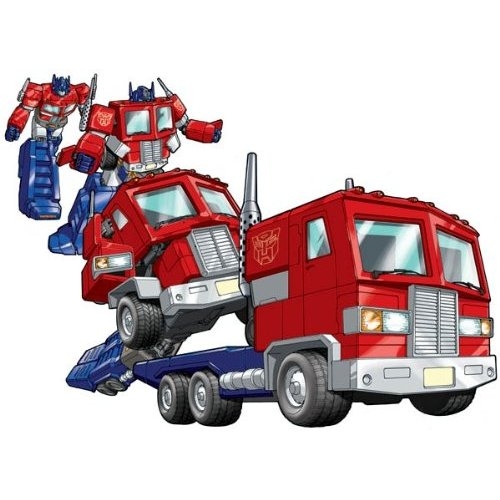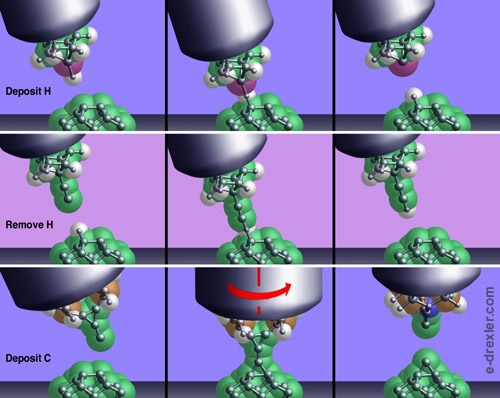
Putting the "Science" in "Science Fiction": Transformers 1 – Adjustable Vehicles
Although they were made popular in the west by the Transformers television series that first aired in 1984, the idea of vehicles that could change into giant robots had already appeared in the Japanese Macross series, later be released in the United States as Robotech.
Much of Robotech’s fame came from the main vehicles of the series. These “Veritech Fighters” could transform from jet fighters into giant robots, passing through a hybrid stage in between, and were crewed by a human pilot. The concept of a transforming vehicle has enormous potential if it were ever fully realized, as it would allow a single machine to share the flexibility and adaptability of multiple vehicles.
Unfortunately, creating a transforming vehicle is extraordinarily difficult in the real world. To use a common fictional example, creating a plane that converts into a robot, such as Starscream, would require a machine that possessed everything necessary to function as a plane and a robot, as well as having specialized machinery that allowed it to transform from one mode to the other. All of these components would need to be able to fit into a machine of the same size as a normal vehicle of its type, and not interfere with each other. The machine would also need a sophisticated computer system to handle transformations and the change in controls between different modes.

Creating a machine like this is a tall order, although advancements in materials and computers may make it more feasible inthe future. Although vehicles that completely switch forms are still far beyond our reach, tentative steps towards this type of craft were taken decades ago with the first of what I will dub “adjustable vehicles.” In my definition, an adjustable vehicle is one that uses limited changes to its structure to adapt to various conditions or offer new capabilities, and can change back and forth repeatedly while in use. Several types of these vehicles are in service with military forces around the world, and several proposals also exist for creating adjustable vehicles for the civilian market.
Currently adjustable vehicles are most common in military aviation, and are mainly split between variable-sweep wing (or swing-wing) and Vertical Take-Off and Landing aircraft. Swing-wing aircraft allow wings that are able to swing backwards or forwards in order to change their flight characteristics. These aircraft, like the F-14 Tomcat and Tornado, tend to fly with the wings straight out to the sides while at low speed and sweep them back for high-speed maneuvers. This increases the fuel efficiency, control and maneuverability of the aircraft at high and low speeds. However, the mechanism to allow the wings to swing adds a great deal of weight and complexity, one reason why few modern aircraft use this technology.

VTOL aircraft are another example of an adjustable vehicle, and include the British Air Force’s Harrier and American Osprey, as well as the controversial and experimental F-35. These aircraft fly just like conventional planes, but when they need to, they undergo a quick conversion to allow them to hover, as well as take off and land vertically. This conversion generally involves either propellers that rotate upwards, like in the Osprey, or nozzles from the engine that rotate downwards, like the Harrier and F-35. In both cases, these aircraft operate by channeling thrust downwards to achieve vertical lift. Once the VTOL craft reaches the desired altitude, the thrust is channeled towards the rear again and it flies off like a standard aircraft. VTOL capability makes an aircraft much more flexible, as it does not have to rely on large runways to take off and land. Unfortunately, VTOL technology is difficult, complex and expensive, and so it is very rare.
Although military forces currently have access to the most adjustable vehicles, many automobile manufacturers are examining the technology with the goal of making more versatile cars. These designs range from being fairly simple advances of standard technology to completely changing the way people think about personal transportation. An example of the former type of adjustable vehicle is the MAININKI, a vehicle that operates as a standard four-seat car in normal driving conditions. However, when in areas where space is at a premium – such as while driving in crowded city streets or trying to park – the front part of the car can tilt up, with the seats adjusting to remain level inside, and the rear retracts in order to make it smaller and more maneuverable. Although certainly different than your average sedan, this car could be built using modern technology without too much difficulty. Although feasible, the cost and complexity of the design may prove prohibitive and it will likely be some time before it goes into production.

The other end of the spectrum can be represented with the Peugeot Globule, a vehicle that consists of four small one-person spheres held within a very flexible polymer coating. Each sphere possesses its own electric motor, enabling it to move, and the spheres are designed to be able to move in relation to each other as well. When there is space, the Globule adopts a standard car-like arrangement with the pods in a square, but in order to move through a narrow space, the pods can arrange themselves into a line. According to the designers, the Globule can even park in an extremely small space by arranging the pods on top of each other. It will be a very long time before such a design becomes feasible due to the technical problems involved, but even if the Peugeot Globule never goes into production, it hints at the intriguing possibilities that adjustable vehicles present as research continues.
Top Photo: amazon.com









